
Preserving Craftsmanship Born from Local Legends: The Tradition of “Oroku Comb”

木祖村お六櫛組合・組合長
Head of the Kiso Village Oroku Comb Association
Kiso [Nagano]
Head of the Kiso Village Oroku Comb Association
Engaged in the artistry of crafting Oroku Combs, a traditional craft of Kiso Village dating back over 300 years to the Edo period. Inheriting the techniques from his father and grandfather, he has dedicated decades to the production of Oroku Combs. In recognition of his skills, he was honored as a "Master Craftsman of Shinshu" in the 2015 prefectural awards. Currently, he is actively involved in training the next generation of craftsmen, ensuring the legacy of Oroku Comb craftsmanship continues to thrive.
In the embrace of the mountains, where premium wood thrives and history flourished as a bustling post town, a unique identity took root in the Kiso region. One of the traditional crafts born from this land is the "Oroku Comb." Renowned for its exceptionally fine teeth, this comb is said to minimize static electricity and, with prolonged use, impart a radiant shine to the hair. We spoke with the head of the Oroku Comb Association in Kiso Village, a craftsman dedicated to upholding this centuries-old tradition that has endured for over 300 years since the Edo period.
Crafting Artistry at 0.6mm Intervals: The Legacy of Oroku Comb’s Delicate Technique
” It’s been several decades since I became an Oroku Comb artisan,” shares the head of the Kiso Village Oroku Comb Association, born and raised in a family of comb craftsmen.
“From a young age, I watched my grandfather and father at work, carefully crafting combs. So, I always thought, ‘I’ll enter the world of combs someday.’ I did try another job at one point, but as they say, the apple doesn’t fall far from the tree. After a few years in a different profession, I returned to the world of comb-making.”
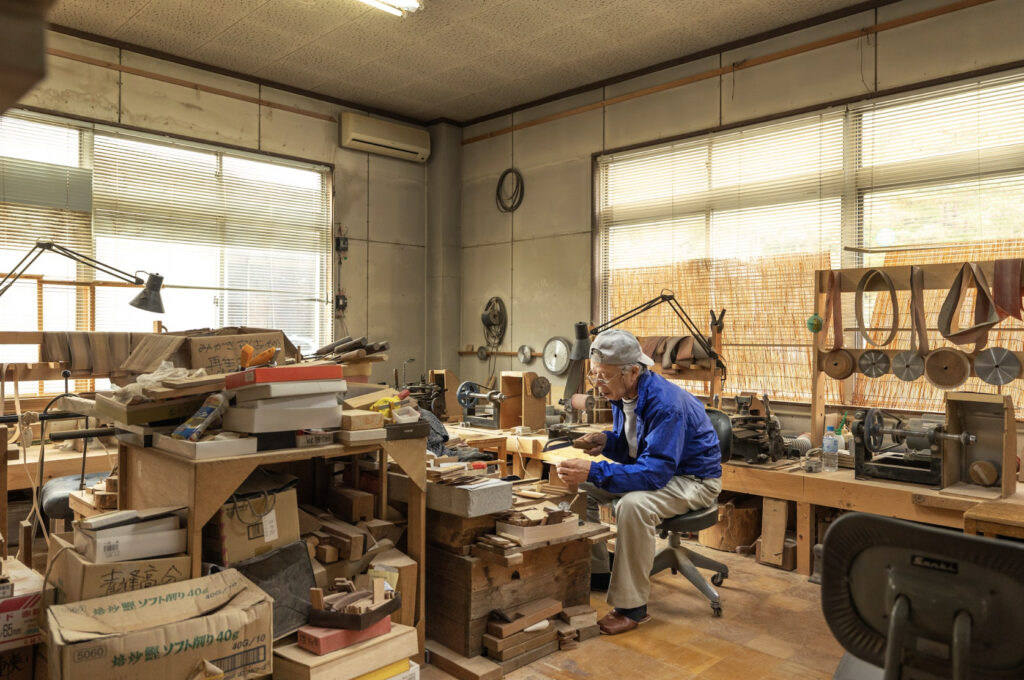
Crafted through a distinctive technique, the Oroku Comb carries forward a lineage of techniques that the association head has also inherited.
“To create an Oroku Comb, numerous tools are indispensable. I was initially astonished by the sheer number of them. Currently, I use over 20 different tools, and it’s necessary to modify them by hand to make them more user-friendly. But, that’s what made it interesting. The process of using tools I’ve adapted to fit my hands to refine the teeth of the comb is the essence of Oroku Comb craftsmanship.”
The combs created by the association head have over 140 teeth within a width of 8.4cm, each meticulously crafted at approximately 0.6mm intervals. The final touches and polishing require complete concentration and showcase the true essence of Oroku Comb craftsmanship.
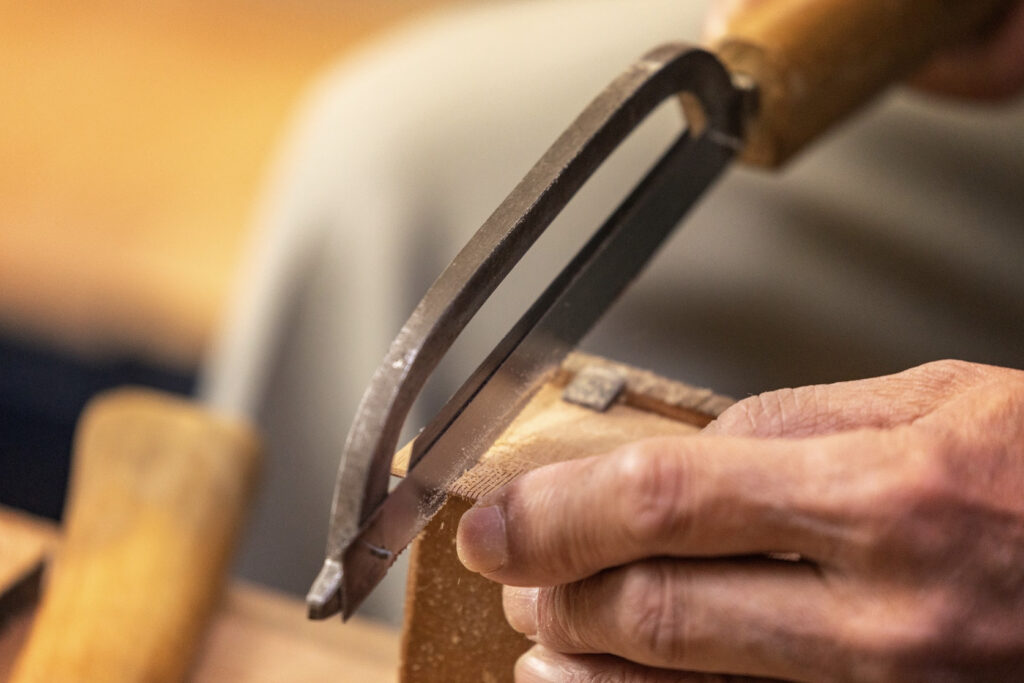
Safeguarding Traditional Crafts Rooted in Local Legends and History
In the preservation of regional “legends” and historically rooted traditional crafts, a unique endeavor unfolds, exemplified by the enigmatic “Oroku Comb.” The association head sheds light on the distinctive name, recounting a legend that has been passed down in Kiso Village since the Edo period.
“Once upon a time in this land, there was a girl known as ‘Oroku.’ Oroku suffered from severe headaches and, one day, she prayed for relief at the Ontake Daigongen Shrine. In response, she received a divine message: ‘Craft a comb from the wood of the Minewari tree and use it to comb your hair for a cure.’ Intriguingly, when Oroku tried this, her long-standing headache miraculously disappeared. In gratitude, Oroku began crafting combs for others who suffered from headaches, offering them as souvenirs to travelers passing through the town. Word of mouth spread, and before long, the name ‘Kiso’s Oroku Comb’ became renowned nationwide.”
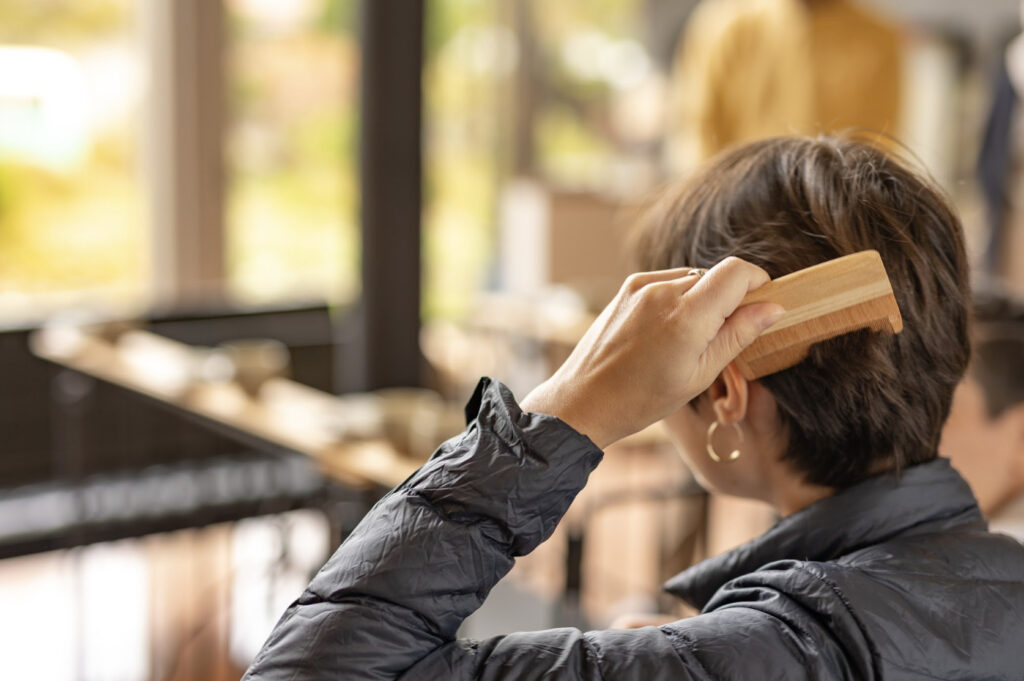
In the legendary tale, the Minewari tree is formally known as “Onoorekamba.” True to its name, it derives from its remarkable hardness, likened to being able to break an axe. Characterized by high density, a weighty specific gravity that causes it to sink in water, and a notable viscosity, Onoorekamba holds a unique place in the lore of Oroku Comb.
“It’s exceptionally sturdy, and when processed, it tends to resist warping. That’s why it’s just the right material for combs with fine teeth, such as the Oroku Comb.”
Moreover, those engaged in comb crafting note a potent antibacterial effect so strong that it imparts a bitter taste in the mouth. Many speculate that this distinctive bitterness might have contributed to the medicinal properties believed to alleviate headaches in the legend mentioned earlier. The enduring resilience and unique properties of Onoorekamba wood further deepen the mystique surrounding the craft of Oroku Combs.
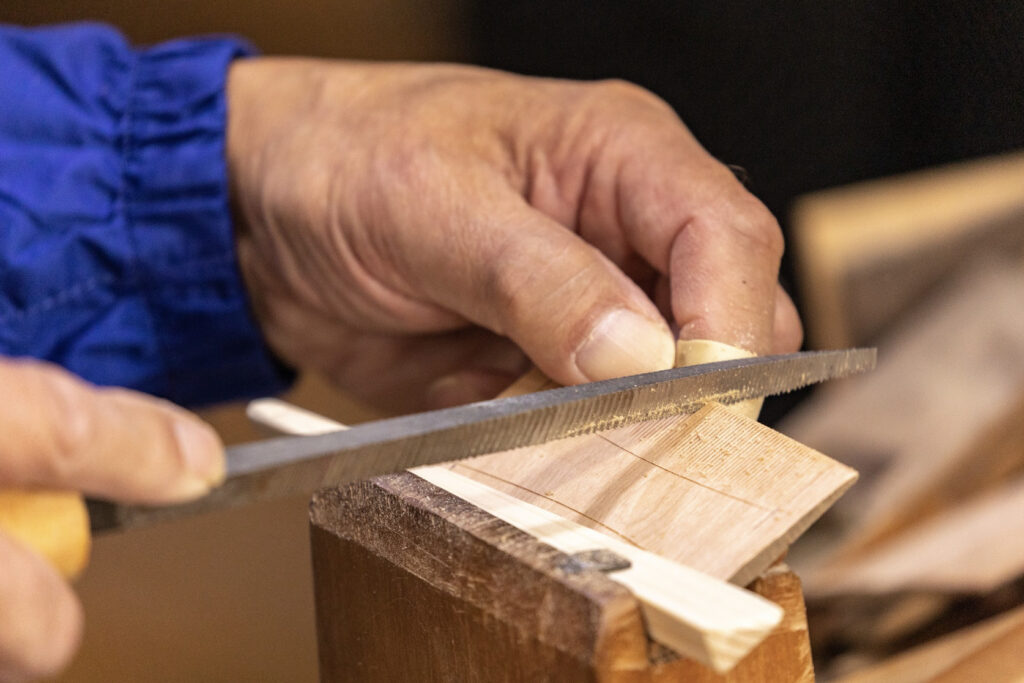
The establishment of Oroku Comb as a traditional craft in Kiso Village goes beyond the existence of a legend. The head of the association emphasizes its inseparable connection with the region’s history, shaped in harmony with the surrounding forests.
“This region’s history, intertwined with the life of the trees, is an integral part of why Oroku Comb craftsmanship took root. Kiso is renowned for the high-quality wood that naturally thrives, even revered as a sacred tree at Ise Grand Jingu Shrine. Particularly during the Edo period, the Kiso Mountains were rigorously protected by the shogunate. While strict regulations were imposed by the country, our ancestors living in this area skillfully utilized the resources of the Satoyama (village mountain) landscape for their livelihoods. As a bustling post town with various travelers passing through, the utilization of wood in traditional crafts also flourished as a local industry.”
Protected and cherished by the community, the trees of Kiso embody a rich history. This identity is intricately woven into Oroku Comb, creating a craft that not only reflects the region’s past but is also a living testament to its enduring heritage.
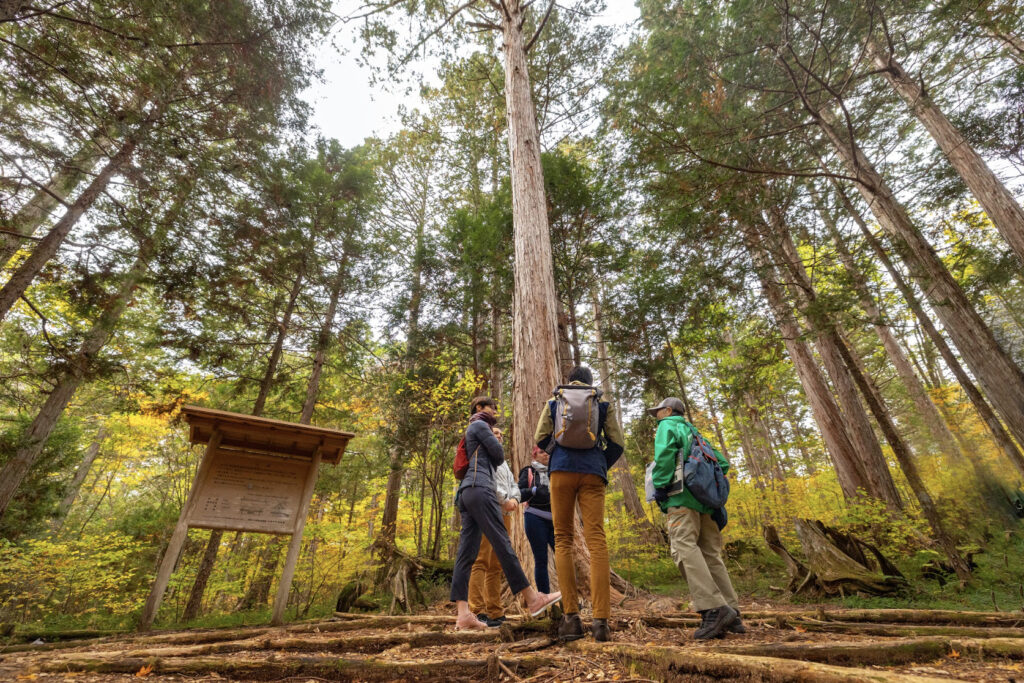
Passing Down Centuries of Craftsmanship: Nurturing Successors through Hands-On Experience
With the aim of delving into the profound artistry of manual craftsmanship, the Oroku Comb Association seeks to pass down its techniques, a tradition that has persevered for over 300 years since the Edo period. Despite the challenges posed by an aging workforce and a shortage of successors in recent years, the association head remains dedicated to the continuity of the craft.
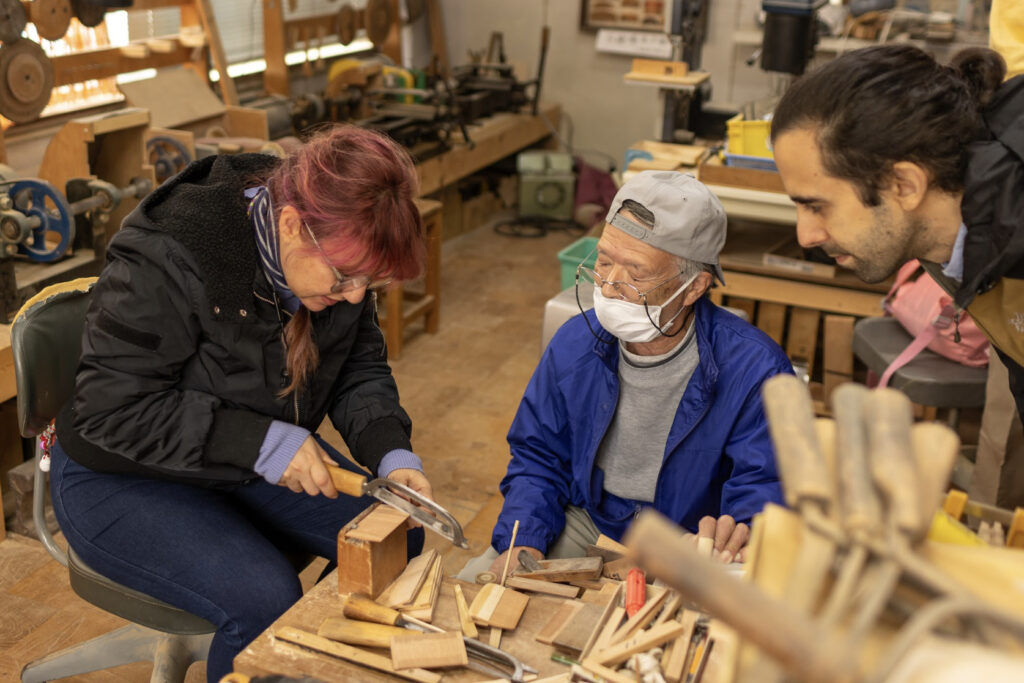
“We, as an association, actively engage in technical guidance at local junior high schools and provide hands-on experiences in Oroku Comb crafting for tourists. In various settings, we create opportunities for people to engage with Oroku Comb. Whether it’s the excitement of crafting a comb by hand or the realization of the intricacies involved in this delicate process, I hope individuals have a chance to savor a fresh and enriching experience. The precision work in millimeters and the meticulous manual labor demand a high level of concentration, but it is my sincere wish that people can appreciate the depth of this manual craft.”
Finally, I asked him about what he wants to connect in the future.
Utilizing the abundant forests of Kiso Village and the high-quality woods that emerge from them, traditional craftsmanship comes to life. Through the meticulous artistry of Oroku Comb, a manual craft deeply rooted in the region, we hope to convey the character and history of this local area.
